|
|
|
|
|
|
|
Pakistani Missile Technology
Ghauri [Hatf-5]
This missile warhead was reported to weigh about 1,300 kilograms with a yield of 12-25 kt. This warhead design would be too large to be carried on an M-11, which does not have the range to reach beyond the Indian Desert to threaten New Delhi or other large population centers. The Ghauri missile represents both an opportunity to use heavier uranium bombs on ballistic missiles, as well as to deliver nuclear warheads to targets across much of India. The Ghauri missile was developed by the Kahuta-based Khan Research Laboratories, led by Dr. Abdul Qadeer Khan, who is responsible for uranium weapons development in Pakistan. This missile was first named Hataf-V, later the name was changed to Ghauri, which was approved by the prime minister. The missile was named after the 12th century Afghan king Shahbuddin Ghauri who captured western parts of India between 1176 and 1182, and captured northern India by defeating Prithvi Raj Chauhan in 1192. The Ghauri name is thus highly symbolic, as "Prithvi" is the name of the Indian short-range ballistic missiles, and Pakistan's "Ghauri" has a much longer range than the Indian missile. On 06 April 1998 Pakistan carried out a successful flight test of the surface-to-surface Hatf-V (Ghauri) missile with a range of 1,500 kilometers (937 miles) and a payload capacity of 700 kg. The missile was tested to hit a target at a range of 1,100 kilometers. The Ghauri was fired from Malute, near the city of Jhelum in northeastern Pakistan, and impacted the target near the southwestern city of Quetta. This is a distance of only some 700 km, significanly less than the claimed range of up to 1,500 km/930 miles. The Indian Test of the Agni II IRBM was conducted 11 April 1999. Pakistan responded on 14 Apr 1999 with a test firing of its Ghauri II missile from the Jhelum region in northeast Pakistan. The vehicle reportedly struck a target in the Baluchistan desert about 1,100 km. away. The US-based stratfor.com intelligence consulting company suggested that Pakistan may have test fired a missile [which could be a Ghauri] on 15 August 2000, when India was celebrating Independence Day. Objects streaking through the skies in Balucistan on that day were perhaps Ghauri-III missile tested by Islamabad, or perhaps they were merely a meteor shower.
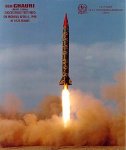 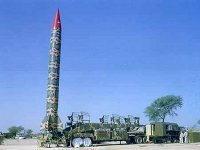 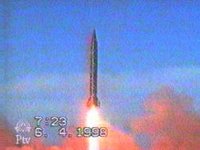
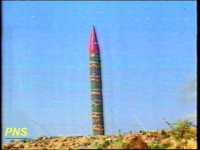 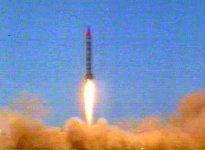 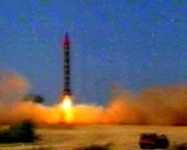
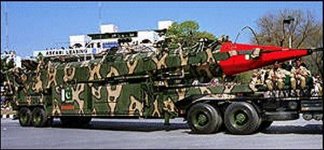
|